How to choose a tree to plant near a terrace?
If you want to plant a tree near your terrace, do not choose it by letting yourself be guided by your tastes and desires alone, but be sure to also take into account the following:
- Some trees can be the cause of stains on the paving of your terrace. For example, fruit trees are not recommended since falling fruit can cause stubborn stains on the ground.
- If your terrace is close to your home or adjoining it and you want a tree that gives you shade in summer, but lets light through in winter to keep some light inside, choose a deciduous tree. On the other hand, if you don’t want to have to pick up the leaves and the permanent shade doesn’t bother you, you can opt for an evergreen tree.
- Certain varieties of trees, such as maples, birches, etc. produce allergenic pollen. If you are sensitive to it and do not want to be disturbed during the summer, avoid planting one of these trees. It would be a shame not to be able to enjoy your terrace.
- The roots develop at the same time as the tree develops and in the same proportions. To avoid damaging your terrace, refrain from planting trees that grow a lot and quickly, and with invasive roots, such as weeping willow, horse chestnut, etc.
- Finally, some trees give off a foul odor during the decomposition of their fruits, such as Ginkgo biloba.
How to plant a tree near a terrace
Here’s how to plant a tree near your patio to prevent the roots from damaging it later:
- Dig a hole deep enough, but not overdone, to allow roots to work their way deeper under the decking.
- Before filling in the hole and planting the tree, you can install a root barrier all around the hole to a depth of about 1 meter. This will guide the roots deeper and protect your deck.
- Start filling the hole with gravel and a little dirt before putting the tree root ball in place.
- Finish filling the hole with soil and tamp it down.
Ideas for trees that can be planted near a terrace
Palm trees
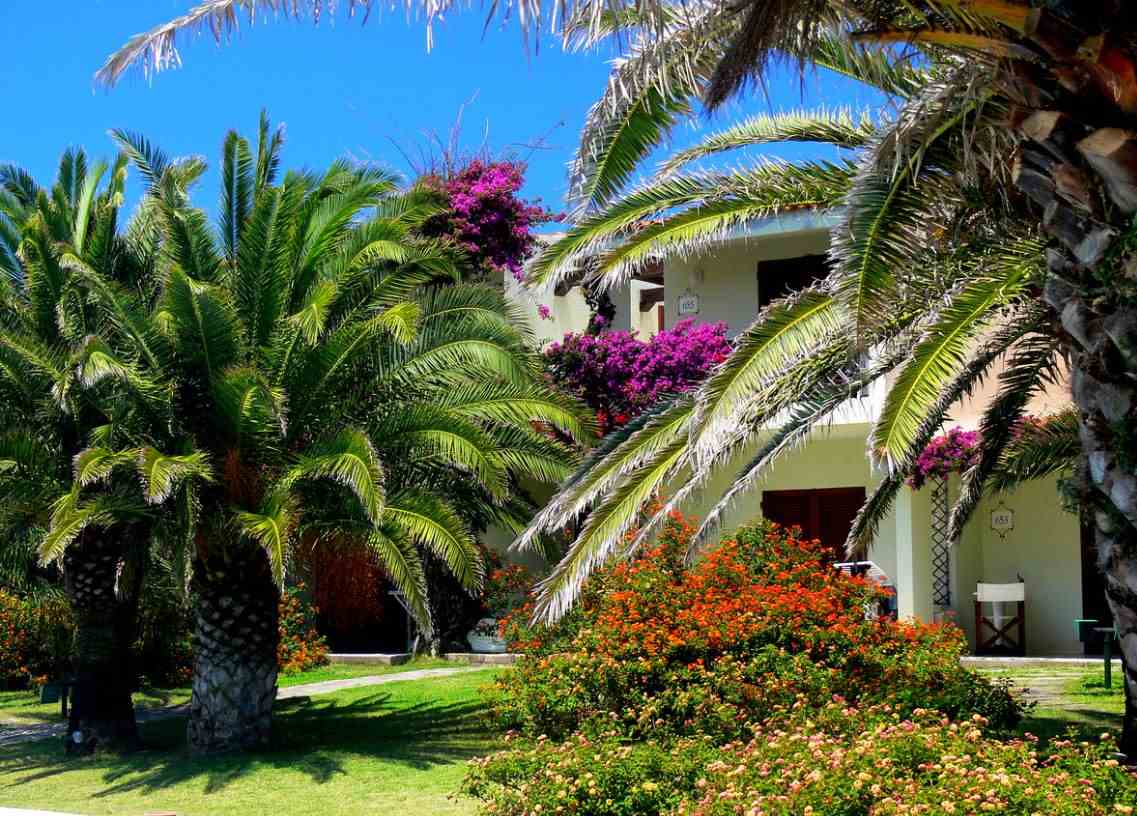
To create a shadow and bring an exotic touch on your terrace, you can bet on one or more palm trees. Among these exotic trees, the Chinese palm lends itself well to this type of use. The only one able to withstand temperatures down to -18°C, it can be planted in any region. Installed in a rich, light and cool soil and in a sunny position or in partial shade protected from cold winds, this tree with slow growth will offer you evergreen foliage of a beautiful dark green color and in the shape of a fan. Adult, it can reach 8 to 10 meters in height.
Olivier
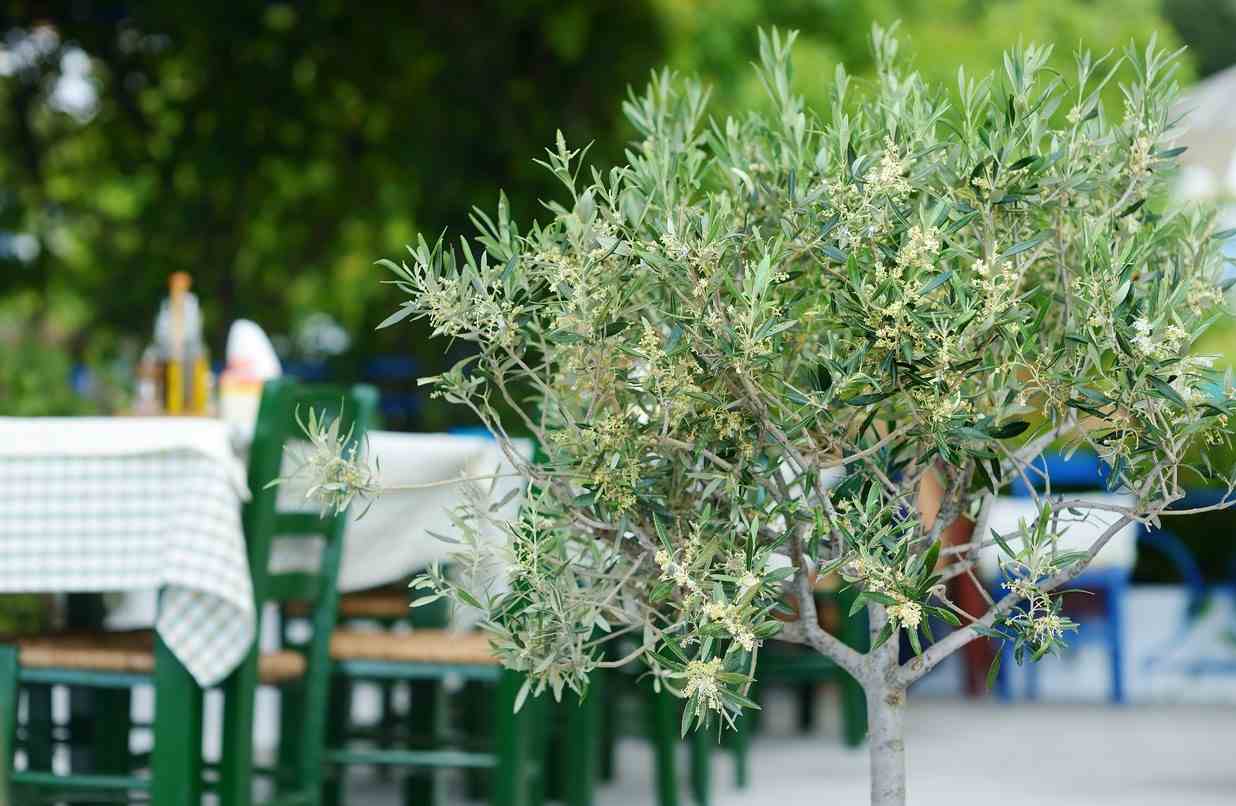
With this emblematic tree of Provence, you will bring a mediterranean touch on your patio. If you follow our planting advice carefully, its root system will not cause you any problems and you will be able to enjoy its beautiful evergreen foliage and dense silver-green color with serenity. A little more chilly than the Chinese palm tree, it nevertheless withstands temperatures down to -10°C. Provided it is installed in a well-drained soil, even stony, and deep, as well as in a sunny position and sheltered from the wind, it is an undemanding tree that tolerates drought very well, but not excess water.
wisteria
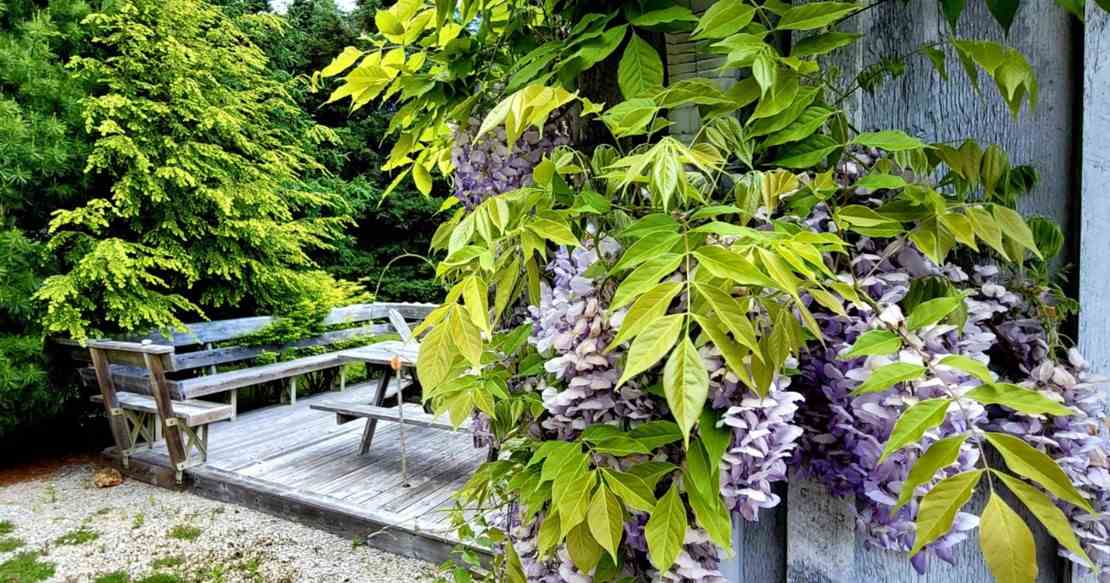
This vine which is often seen sprawling over pergolas or walls can be pruned to take advantage of a small stemmed tree. However, this must be done during the first years of its growth. This plant, which has a clear preference for sunny pitches and sheltered from strong winds is very hardy and can withstand temperatures down to -20°C. In spring, it is covered with beautiful clusters of fragrant flowers. But be careful, to limit the proliferation of lateral branches, it will be necessary to prune 3 to 5 throughout the year.
Magnolia
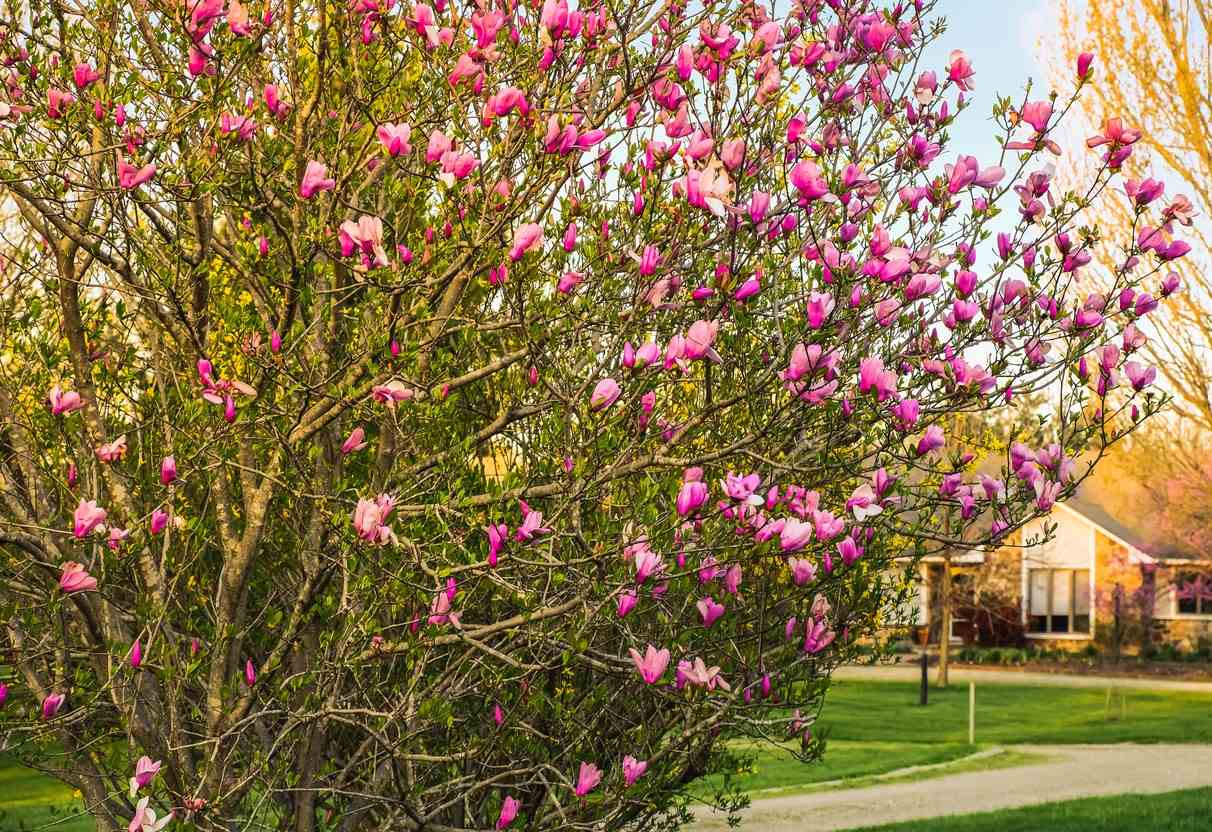
Known for its exceptional flowering, the magnolia can have a deciduous or evergreen foliage depending on the species chosen. Generally, evergreen magnolias are taller than deciduous ones. The magnolia requires only low maintenance, but it is recommended to mulch its foot to give it the acidity it needs, as well as to preserve the humidity of the soil. On the exposure side, it should be reserved a sunny or semi-shaded location.
Catalpa
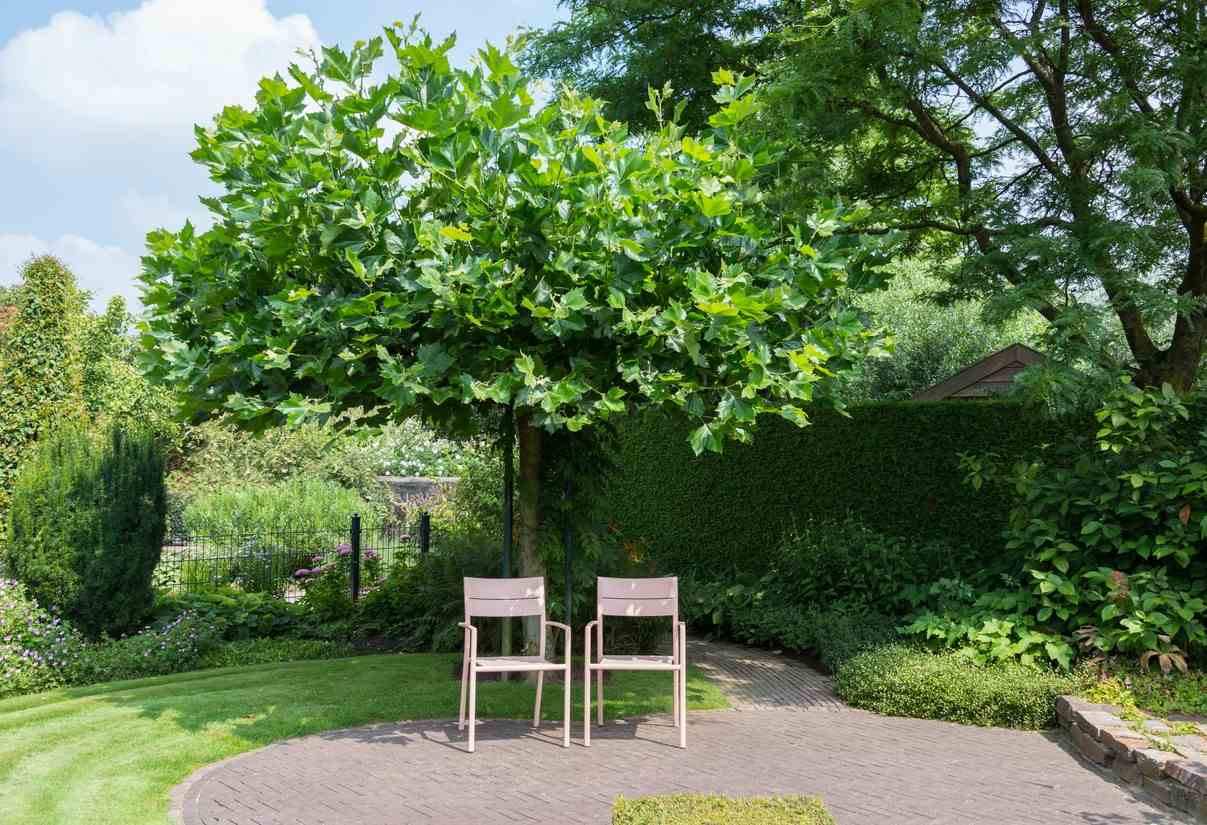
Ideal for create a natural shadow, the catalpa is a very decorative tree with its large soft green leaves and its magnificent white or pink flowers, depending on the species. Able to withstand temperatures down to -20°C, it is one of the very hardy trees. It will grow best in a sunny location sheltered from strong winds and in drained, fresh and fertile soil, may even be calcareous. Its deciduous foliage allows light to pass through in winter, but protects you from the sun in summer.
Chionanthus
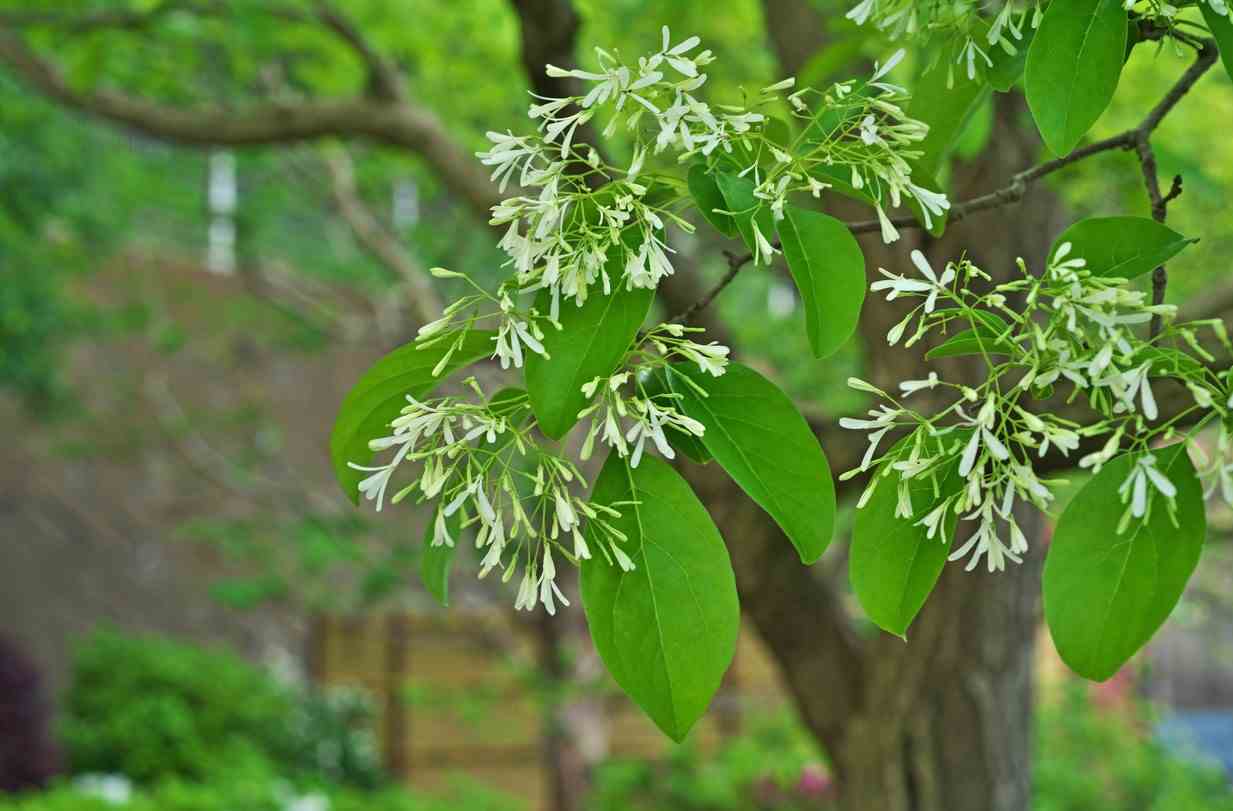
Also known as “snow tree”, this slow-growing little tree, which likes to be exposed to full sun, fears neither harsh winters nor the episodes of frost that can occur in the spring. Chionanthus is characterized by a spreading habit and deciduous foliage. At the end of spring, it is adorned with white, drooping and feathery panicles which give off a pleasant minty scent.
There are 2 very similar species: the Chionanthus virginicus and the Chionanthus retusus. The latter is less high, its leaves are smaller and the petals shorter. The flowering of each of these species does not take place quite at the same time.
Acer palmatum

L’japanese maple is well known and widely used. Son deciduous foliage is very decorative with the webbed shape of the leaves and the shimmering colors that they take on over the seasons. Slow growing, it can measure between 1 and 10 m high and have a bushy, slender or weeping habit depending on the species. To ensure its development, it should be planted in cool, draining and slightly acidic soil, as well as in a location exposed to partial shade and benefiting from the rays of the morning sun. This tree does not fear frost, however, it is recommended to mulch the foot of young trees.
Albizia
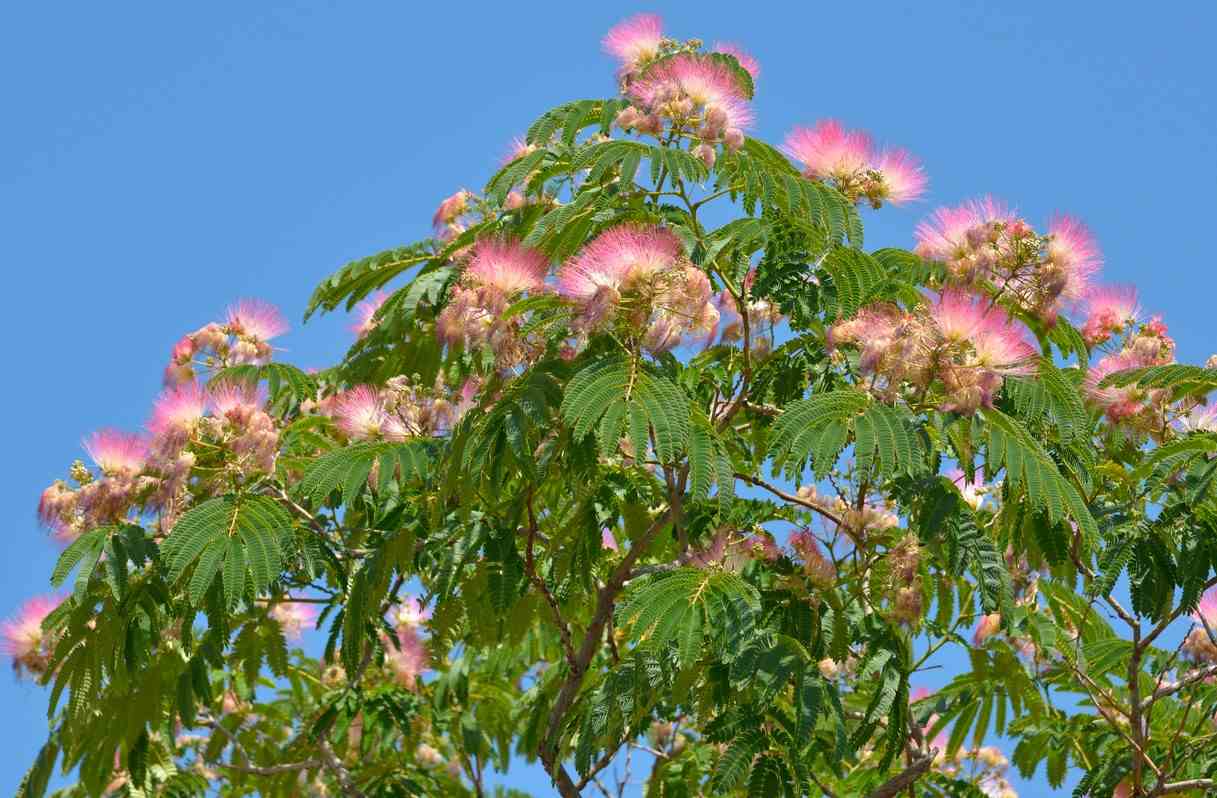
This small tree is known for its abundant summer flowering. Original, its feather duster flowers can be pink, red or white. In general, it is a very resistant tree that tolerates drought well. It is characterized by a spreading habit and can be grown in the ground, in containers or in pots. This last mode of cultivation is recommended, especially in regions with harsh winters, as it only tolerates frost for short periods and provided that temperatures do not drop below -10°C. Furthermore, he needs a sunny location and deep, well-drained soil.

